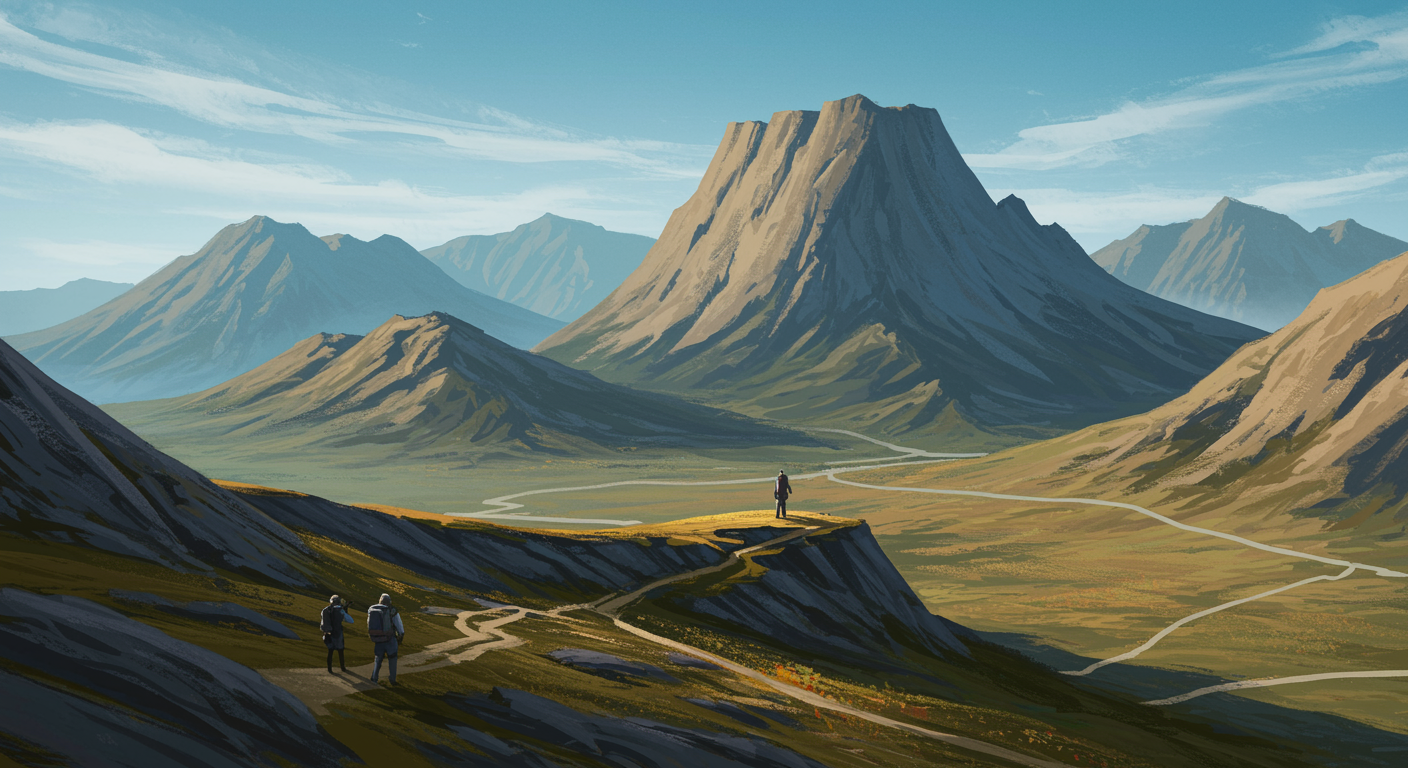
When we picture how mountains form, our minds often jump to titanic collisions: the grinding of Earth’s massive tectonic plates pushing colossal slabs of rock skyward. This dramatic scenario, responsible for giants like the Himalayas or the Rockies, is undeniably a primary architect of our planet’s most imposing topographical features. Yet, what if some of the world’s prominent elevated landforms owe their existence not to uplift, but to the slow, persistent removal of material around them? It turns out, this less-heralded process, driven by the relentless forces of erosion, is a powerful sculptor of our global landscape, revealing an alternative mode of mountain building that challenges our conventional understanding of geography.
Indeed, while tectonic forces lay the groundwork by elevating large blocks of the Earth’s crust, it is often erosion that carves these elevated platforms into distinct peaks and valleys, sometimes even creating mountainous terrain from what was once a relatively flat plateau. Imagine a sculptor beginning with a large, undifferentiated block of stone. Tectonic plates provide that initial block, lifting a vast area. Then, rain, rivers, ice, and wind act as the chisels and brushes, meticulously removing softer surrounding material over millions of years, leaving behind the more resistant rock as the standing “peaks.” These are not mountains in the traditional sense of having been actively folded or faulted upward into sharp ridges, but rather residual high points, standing proud because everything else around them has been worn away.
Consider the Appalachian Mountains in the eastern United States. While these ancient ranges did experience significant tectonic uplift in the distant past, their current appearance is largely a testament to deep erosion. Over hundreds of millions of years, vast quantities of overlying rock have been stripped away, exposing the underlying, more resistant geological structures. The distinctive ridge-and-valley topography, a hallmark of the central Appalachians, is a perfect example. Here, layers of rock that were once folded and faulted by tectonic pressure have been selectively eroded. Softer shales and limestones have been scoured out, forming valleys, while harder sandstones and conglomerates remain as long, parallel ridges. The peaks you see today are not necessarily the highest points ever achieved by the original uplift, but rather the durable remnants of a much larger, higher ancient mountain belt, shaped and refined by millennia of weathering and transport.
Another compelling example can be found in parts of the Scandinavian Mountains, particularly in Norway. Here, repeated glacial cycles have had an extraordinary impact. During the last ice ages, enormous sheets of ice scoured the land, deepening valleys and carving out fjords. While underlying tectonic forces did create the initial high-standing bedrock of the Scandinavian Peninsula, the dramatic relief and sharp peaks we observe are largely a product of this intense glacial erosion. The ice acted like a massive bulldozer, plucking away weaker rock and grinding down vast areas, leaving behind the more resilient, ancient bedrock formations as steep-sided mountains and plateaus dissected by deep, U-shaped valleys. The very definition of a mountain in these contexts shifts from an upward-built structure to a remaining feature.
This process of “erosional exhumation” also plays a crucial role in shaping isolated mountain ranges and mesas across various continents. Take, for instance, the Drakensberg Escarpment in Southern Africa. This impressive barrier is not primarily the result of recent tectonic folding, but rather the erosional retreat of a vast plateau that once covered much of the country. The sheer cliffs and towering peaks are the result of rivers and weather slowly eating away at the softer sedimentary layers, leaving behind the hard, erosion-resistant basalt caprock that forms the dramatic skyline. Similarly, many isolated buttes and mesas in the American Southwest, often seen as smaller-scale mountains, are classic examples of differential erosion. They stand tall because their caprock is more resistant to weathering than the surrounding softer sedimentary layers that have been stripped away.
Understanding this dual nature of mountain formation–tectonic uplift laying the foundation, and erosion meticulously crafting the final form–enriches our appreciation for Earth’s dynamic systems. It highlights how geological time scales allow for processes that appear infinitesimally slow in human terms to achieve monumental results. The movement of a single raindrop, repeated trillions of times over millions of years, can collectively remove entire mountain ranges. This perspective reminds us that even when tectonic activity ceases, the landscape continues to evolve dramatically under the influence of water, ice, and wind.
So, the next time you gaze upon a distant mountain range, consider not only the immense forces that pushed its foundations skyward but also the patient, persistent work of erosion that sculpted its present form. These silent architects of Earth’s surface demonstrate that mountains are not merely born of violent collisions, but are also tirelessly carved into existence, revealing stories of deep time and the constant, subtle reshaping of our planet.